Doing Away with the Death Economy
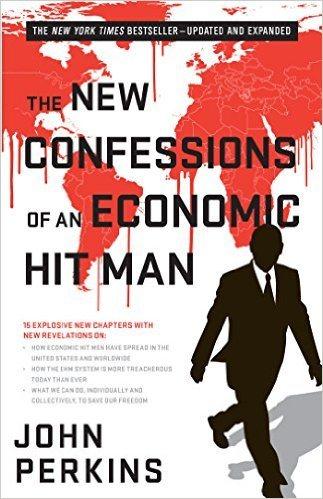

Open John Perkins' "New Confessions of an Economic Hit Man," and you'd think you were reading a pulpy thriller from the airport bookstand. Stories include dark alleys, secret missions and CIA operatives dispatched to assassinate democratically-elected officials.
But according to Perkins, it's true. His role in this matter was as a staid-but-impressive-sounding Chief Economist for a privately-owned consulting firm. His job, as he describes it, was to produce inflated economic growth projections and encourage heads of state to take out big loans from the World Bank to finance these infrastructure projects.
Perkins' firm and others would take contracts to build the infrastructure: roads, electric grids, oil pipelines, etc. and get paid whether or not the projected economic growth materialized. If it didn't, all the better: The country would be vulnerable to developed countries' whims as it struggled to pay back the loans it approved under duress. For example, in one of his first projects in Indonesia in the '60s:
Perkins' boss Charlie intones while puffing on a cigar: "Speaking of oil, we all know how dependent our country is on oil. Indonesia can be a powerful ally to us in that regard. So, as you develop this master plan, please do everything you can to make sure that the oil industry and all the others that serve it -- ports, pipelines, construction companies -- get whatever they are likely to need in the way of electricity for the duration of the twenty-five year plan."
In Indonesia, Perkins was pressured to project 17 percent growth, when the best estimates for electrical demand growth in a comparable situation were in the 6-percent range. He watched this scene play out over and over again in countries around the world before finally leaving the profession in the '80s.
Unfortunately, in the intervening decades, the intersections between big corporations and government have only gotten more insidious. TriplePundit spoke to Perkins to find out more.
The corporatocracy
While Google defines "corporatocracy" as a society or system that is governed or controlled by corporations, this definition ignores the substantial grey area that exists when independently-elected government officials are influenced by corporations, either through the donations that helped them win or past or future job prospects. Even well-meaning politicians can fall under undue corporate influence.
As Perkins described in our interview, the corporatocracy is: "a vast network of people who run global corporations, collaborating governments and the extremely wealthy who are deeply tied in to this system." The system includes a revolving door between plum consulting gigs and government office.
Perkins is quick to point out that this isn't a global conspiracy: "They don't get together in secret meetings and plot to do evil." Rather, each group is individually driven by the same goal: to maximize profits regardless of the social and environmental costs. This is the system Perkins calls the death economy.
"We've really created a global empire; it's a corporate empire; it's controlled by big corporations; the government is controlled by big corporations. It's based on ravaging the earth and warfare, and it's a terrible failure -- it's not working."
He goes on to explain that the death economy is driven by death and fear. This isn't really a new idea in leadership. In fact, rulers have used debt and fear to get their people to do what they want for millennia. What's changed is the global, networked nature of the game.
The death economy engages "General Dynamics and Raytheon to make missiles and tanks and armored plating for people's bodies," after creating a fear of terrorism, Perkins explained. Fear of the spread of communism used to drive Perkins' work in the '60s. Now, "it's insurgents, immigrants, terrorists, muslims, muslim terrorists."
But Perkins urges us not to take the bait. "The fact of the matter is that the real enemy is the system. There's no such thing as global terrorism -- it doesn't exist. There are global acts of terror." But there is no single, principal that unites al Queda, Somali pirates and FARC in Colombia. The only thing that unites the members of these groups is enough desperation follow a fanatic.
"If you want to deal with terrorism and what gets called 'the immigration problem,' we need to do away with the situation that creates a scenario in which people want to or have to flee their countries in order to survive. If we want to do away with terrorism, we need to do away with the circumstances in which people will turn to fanatics. Let's try to change their situation. In all these cases, the answer is to create a global economy that works."
Perkins calls the alternative a life economy: an economy that employs a lot of people to do away with the conditions that drive people to desperation. The life economy is driven by renewable power, clean transportation, global hunger eradication and paying someone to fix the great garbage patch in the Pacific ocean. People are realizing that "we live on a very fragile space station with no shuttles," and a transition to the life economy may be our best bet to turn things around. "I think this is an incredibly exciting time," Perkins explained optimistically.
So, how do we get there?
The path to change means pressuring companies to comply -- boycotting their products and telling them why. Social media makes it easy to contact corporations and tell them you expect them to change for the better: offer fair wages and safe products that don't pollute the planet.
"Everyone can pick a corporation and go after them. Scratch that, let's say everyone can pick a corporation and help them survive in a new reality, the reality of the life economy. We want to help these corporations to be successful at creating a world that our children will thank us for inheriting."
While those individual actions are easy, the corporatocracy will make lasting change an uphill battle. That means we have to pressure corporations directly to change how they engage with the government. At the end of the day, we need to engage the corporatocracy rather than work to defeat it.
To learn more check out the New Confessions of an Economic Hit Man or attend a book signing to talk with John Perkins in person.
Image credits: Book jacket, Google Screenshot
Shareholders Ask the SEC: Stop ExxonMobil’s Attempts To Block Climate Resolutions
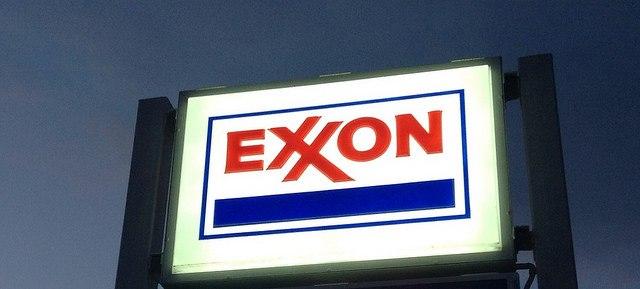

Now is just not a good time to be ExxonMobil. Five shareholders, led by New York state’s comptroller, asked the U.S. Securities and Exchange Commission to reject the oil giant’s plan to block a climate change shareholder resolution.
Filed in December, the shareholder resolution requests that by 2017 Exxon publish an “annual assessment of long-term portfolio impacts of public climate change policies." It concedes that such an assessment should come "at reasonable cost" and "omit proprietary information.”
ExxonMobil’s response was to notify the SEC that it intends to block the resolution from a shareholder vote at its annual meeting in the spring. So, the New York state comptroller and the four other shareholders who filed the resolution sent a letter asking the SEC to prevent Exxon’s plans to block it. The four co-filers include the Church of England’s investment fund, the Vermont State Employees' Retirement System, the University of California Retirement Plan and the Brainerd Foundation. They collectively represent almost $300 billion in assets under management and over $1 billion in Exxon shares.
The aim of the shareholder resolution is to “ensure that ExxonMobil fully evaluates and mitigates risks to the viability of its assets as a result of public climate change policies, including in a 2 degrees scenario,” the letter to the SEC states.
This is not the first climate change shareholder resolution Exxon has recently tried to block. Earlier this month, TriplePundit reported on a shareholder resolution filed by 34 institutional investors. Led by the Sisters of St. Dominic from Caldwell, New Jersey, the resolution calls on Exxon’s board to “adopt a policy acknowledging the imperative to limit global average temperature increases to 2 degrees Celsius above pre-industrial levels, which includes committing the company to support the goal of limiting warming to less than 2 degrees Celsius.” Exxon recommended in a letter that the proposal be left out of the 2016 proxy materials.
“The risks from climate change are material financial risks, and fossil fuel companies have a legal obligation to disclose them,” Shanna Cleveland, who manages the Carbon Asset Risk Initiative at the nonprofit sustainability advocacy group Ceres, told TriplePundit. “Energy markets are changing dramatically, and the Paris Agreement has fundamentally altered the way nations and businesses think about the financial risks of climate.”A number of media outlets, including the Los Angeles Times and InsideClimate, have reported on Exxon’s failure to disclose climate change risks and lying to the public about those risks. In January, California Attorney General Kamala D. Harris launched an investigation into the company for its failure to disclose climate change risks. New York Attorney General Eric Schneiderman launched a similar investigation into the company last November.
Cleveland points out that Exxon's approach to dealing with climate risk disclosure "has been to dig in its heels, which has led to investigations by the New York attorney general and the California attorney general about whether Exxon has misled investors about climate risk."
Scientists call out Exxon for its funding of climate denial groups
Exxon has a shady past funding climate change denial groups, and because of it some folks just aren't happy with the oil company. This week, over 100 scientists sent a letter to the American Geophysical Union (AGU) calling for an end to Exxon’s sponsorship of the group. “By allowing Exxon to appropriate AGU’s institutional social license to help legitimize the company’s climate misinformation, AGU is undermining its stated values as well as the work of many of its own members,” the letter states.“We're calling on AGU to reject ExxonMobil's sponsorship because it poses a serious conflict of interest,” Ben Scandella, PhD candidate in environmental science at MIT and one of the letter’s signatories, told TriplePundit. “ExxonMobil has waged a campaign over the past 30-plus years to confuse the public about climate science and lobby policymakers to prevent meaningful climate policies, and these activities run completely counter to AGU’s core mission to ‘promote discovery in Earth science for the benefit of humanity' and for 'a sustainable future.’”
Scandella added that the AGU has an organizational support policy that says it “will not accept funding from organizational partners that promote and/or disseminate misinformation of science, or that fund organizations that publicly promote misinformation of science.”
Clearly, the AGU must make a decision whether it wants to keep accepting sponsorship from a company that has engaged in climate denial -- and the SEC has its own choices to make when it comes to Exxon and climate risk.
Image credit: Mike Mozart
Prologis Makes the Business Case for Investing in Solar
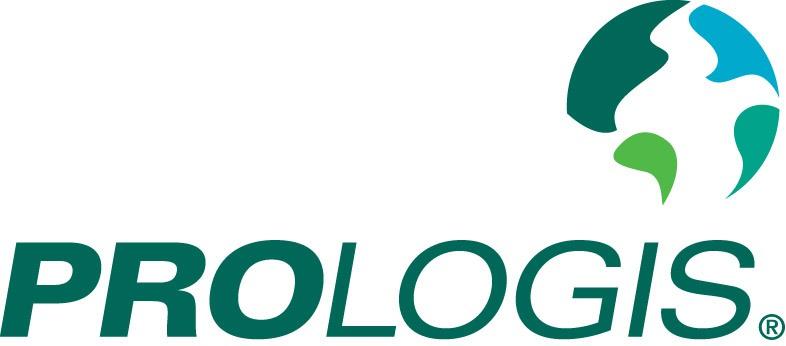

As investment in solar power increased rapidly over the past several years, many pundits pointed to the potential that big-box stores and warehouses could play in the U.S. clean-energy revolution. The reasons were obvious: These buildings offer plenty of wasted surface area that could otherwise be slathered with solar panels; they could generate power to offset their utility bills and gain financially from contributing to the local grid; and they are reasonably close to business and residential areas.
Now this scenario is becoming the reality, though 10 years ago no one would have guessed that Walmart would become the largest company by solar capacity in the U.S. Other retailers have become active investors in solar as well, including Target, Kohl’s and Macy’s. But the second largest corporate solar power generator in the U.S., warehouse operator Prologis, reveals opportunities for logistics companies and warehouse operators that take advantage of solar power’s cost benefits.
Prologis has long been engaged in the solar industry, and has touted the benefits of solar when it was still considered a fringe technology and few were convinced it could scale despite a bevy of new tax credits and other government incentives. But despite the constant fits and starts, more solar power capacity was actually installed last year in the U.S. than electricity generation coming from natural gas.
Prologis is riding this wave, and as a recent Slate article explains, the $51 billion company became adept at turning an unused asset into a revenue generator. And unlike retailers, which are often quite vocal about their solar installations, Prologis built its solar portfolio quietly and under the radar.
Prologis’ partners are all over the map, from mainstream NRG Energy and Bank of America to Green Finance SF for a project in the Bay Area. Meanwhile the company has built new warehouses that meet sustainable construction standards, such as LEED here in the U.S. and other certification programs abroad. The results are what the company says is enough solar power to electrify 15,000 homes annually. By 2020, Prologis promises to reach a total of 200 megawatts of power by adding an additional 15 MW annually across its properties worldwide.
Estimates on how much warehouse space is in the U.S. vary, but one university study suggests there is about 76 square feet of such space per capita, or about 24 trillion square feet (about 862 square miles, or larger than the area covered by New York City and Los Angeles combined). Yet much of that power lies untapped, despite the incentives available in several states.
Of the 10 largest warehouse operators in the U.S., only Kenco has disclosed any solar operations — and those are only measured in kilowatts, enough to power 40 homes. The estimated 4.5 billion square feet taken by big-box stores in America has the potential to generate 62,000 MW of solar power — imagine what could result from warehouses nationwide.
Image credit: Prologis
Study: Migrant Worker Abuse Bad for Business
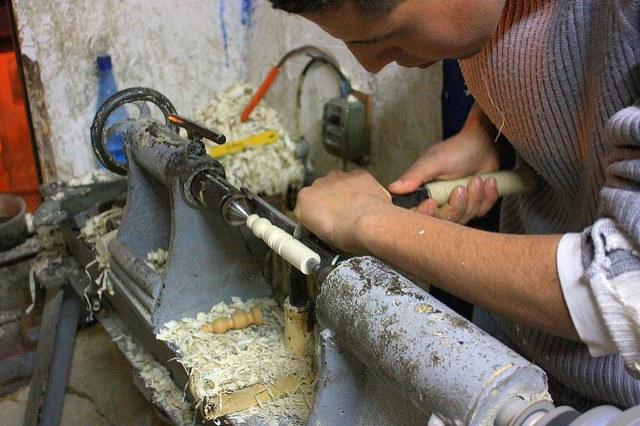

Who gets to decide which workers are deserving of a truly living wage and who can get by on less? Can multinational companies continue to turn a blind eye toward human rights abuses in their supply chains? Watchdog groups are highlighting a pervasive problem with migrant worker abuse that has largely gone unnoticed, despite its part in the global economy. Business analysts increasingly see a lack of accountability about human rights as an industry risk.
In its Human Rights Outlook 2016 report, the Verisk Maplecroft firm identifies refugees and migrant workers forced into low-wage labor as a key risk to global businesses. This is because a lack of transparency in the supply chain prevents top-level decision-makers from being accountable for what is happening on the local level. Some people who've needed safe passage out of their home countries ended up in a modern version of indentured servitude. Report authors assert that ignoring human rights as it applies to the supply chain threatens the reputation of companies doing business around the globe.
“The risks for business are amplified by increasing public scrutiny of unmapped tiers of the supply chain and benchmarking of company human rights performance,” states Dr Alexandra Channer, principal human rights analyst at Verisk Maplecroft. “Damage to hard-earned brand equity, consumer backlash and divestment by ethically-focused investors pose real threats to companies who are found to be knowingly or unknowingly complicit in abuses.”
The International Trade Union Federation also reports grim concerns about a so-called hidden workforce of people who are often exploited for extremely low wages in questionable working conditions. The ITUC report lays out these key recommendations for companies to be more mindful of supply chains:
- Supply chain: Know whom you contract from and publish this
- Safe work: Inspect sites, fix hazards and recognize workers’ right to safety committees
- Secure work: End short- term contracts
- Minimum living wages: Pay wages on which people can live with dignity
- Collective bargaining: For wage share and decent wages and working conditions
Even the luxury industry is getting in touch with its up-and-coming customer base that is more likely to demand socially-conscious sourcing. TriplePundit previously reported this via Positive Luxury. Consumers who can afford the very best luxury goods are expecting an inherent value in socially-conscious production.
Many of the guidelines available for global businesses to follow are completely voluntary, while some are woven into national or regional lawmaking. The United Nations offers some guiding principles on human rights, although these are not necessarily enforceable. The U.K. Modern Slavery Act puts businesses on notice in the United Kingdom that they are responsible for transparency in their supply chains as it relates to human rights. The Act specifically calls for business reporting that shows a mindfulness toward preventing the use of human trafficking and abuse by suppliers. In the United States, proposed new rules about the origin of seafood could potentially protect workers in the global fishing industry.
The Verisk Maplecroft report suggests that better education, more widespread human rights reporting and accountability by suppliers can help minimize the business risk of worker abuses. ITUC is even more critical, asserting that entire business models for multinational corporations have been built on supply chains that systematically allowed exploitation and abuse of workers. From low wages to poor working conditions to pollution of regions where a low-wage workforce lives, ITUC is calling out conditions that must be improved if businesses are to truly say they're operating within a socially responsible framework.
Organizations like Ethical Corp. with its Responsible Business Summit are aiming to provide solutions to companies that want to do business in a more socially-responsible fashion. B Lab, the group behind B Corp certification, is another positive example of a leading social responsibility group that is helping companies be more mindful of their work forces and supply chains.
Social responsibility is no longer a novelty that an elite few businesses can afford to focus on. Per concerns about human rights issues such as what's happening with migrant workers halfway around the globe, socially-responsible supply chains are more often seen as a requirement for companies that want to succeed.
Image courtesy: Evan Bench via Creative Commons
A Village is Being Built to House the Homeless


People think that if you house the homeless then you’ve solved homelessness. But the CEO of Mobile Loaves and Fishes, Alan Graham, says that’s not true. He’s creating a radically different approach that turns our current response to homelessness upside down. He’s building an entire village for the chronically homeless of Austin, Texas. You might say he’s a bit … proactive.
Imagine you’re living on the streets. Your family has broken down. You’ve had some mental health issues. You lost your job, got arrested for loitering, then arrested again for trespassing because you wanted to sleep with a roof over your head. And again for public intoxication. You live on the streets, where else are you going to get drunk? And how can you not drink? You’re eating out of trash cans for gosh sake. Life’s hard. You can’t catch a break.
But then you do catch a break. The sun rises one day and you get to move from your cardboard box on the dark, cold street to a rad mini pad. It has a couch, a table and even a bed. You get to have 250 neighbors and friends … even chicken and goat friends. Yep, you’re living in a 27-acre village and farm.
You’re lucky! Like one in 578,424 lucky. Yeah, that’s how many people were spending the night on the streets of the U.S. in January 2014. You get to snuggle down into a nice warm bed. A bed! You haven’t slept in one of those in years. In the morning you can wake up and check on your tomato plants in the community garden. In the evening you sit in a rocking chair and swig down a cool beverage on your front porch. Yeah, a porch. A cool little spot where you can sit and stare across the serene landscape of plants, gardens, walking trails, a wood and blacksmith shop, art studio, physical and mental health facilities, chicken coop, goat pen, and 250 little mini houses and fancy trailers dotting the village. It feels so, *sigh*, relaxing.
The Community First Village that Graham is building is all of this and more. He says the idea came to him while vacationing in a hunting and fishing campsite with RVs. Oh, and he was also a real estate agent. That helps too. He says the village plan is “built on an RV community model, but on steroids.” (Steroids like a movie theater, meditation area, and bed and breakfast.)
A myriad of issues can cause homelessness, but Graham says that after becoming intimate friends with hundreds of chronically homeless people, he sees family breakdown as the main cause.
The people moving in once had lives “probably a lot like your life. Inside your family, you’ve had issues,” he says. “I don’t know what the issues are in your family. You probably have a mom, a dad, an aunt or an uncle [who] has battled addictions or behavioral health issues ... So, these are those people, but without a family structure that came up underneath them to provide a safety net. So really, they’re me and you — without a family.”
If the main problem is a breakdown in the family, then just giving people homes doesn’t end homelessness. You also have to give them a supportive community, a family. This is what the Community First Village is accomplishing.
Just as importantly, the housing itself is quite different than what is typically provided to the homeless. “If you really want to understand homelessness it would be important to understand what home is,” he says. The current model is to rip the homeless out of their street communities and plop them down in a shelter or apartment. Lodging like this isn’t a home.
If that’s not a home, then what is? A home is a permanent place you can call your own. You can hang up pictures on the wall and invite your friends over for a cup of coffee. It’s safe. You have friends nearby and make memories. You belong there. It’s not a temporary shelter.
A private apartment won’t feel like home either because you won’t be around anyone like you. You won’t have anyone to talk to because your vibrant street community was taken from you. Studies show that living in isolation leads to lonesomeness and depression – that doesn’t exactly work wonders for your health. You also have to have a supportive community, a family.
This new model of housing the homeless in a charming little community appeals to human nature so deeply that advocates for the homeless from across the U.S., Australia, New Zealand and Ireland are visiting to explore the village model. Just about everyone who visits says, “I would live here! This is great!” It’s interesting that something built for extraordinarily poor people is so appealing to the middle class.
In addition to providing a home and community for the homeless, the Community First Village is also saving the city of Austin a significant amount of money. Graham says the city spends about $40,000 per homeless person per year. The main expenses come from medical providers and the criminal justice system.
He estimates the Community First Village will save Austin 2 to 3 million dollars per year from now on. That’s a lot of taxpayer moolah. The city is supportive of the Community First Village, but it has not financially contributed. All funding for the village project was privately donated.
The operating expenses for the village will be partially paid for by the people living there. Village residents will spend $225 to $500 per month to rent a home. The cost is so low that most of the residents can cover it with their Social Security benefits. They can also work in the village or city to earn money. The city bus stops right outside the village. How convenient.
This new strategy to house the homeless is a response to an old model that isn’t working. Graham points to Skid Row in Los Angeles as an example. “It’s a train wreck,” he says. “It’s a third-world country in a 10-square-block area in [Los Angeles] — one of the most abundant cities on the face of the planet. Unbelievable that it exists in the United States of America.”
So, what can you do to help out? Graham suggests trying to prevent homelessness in the first place. Since one of the causes of homelessness is loss of family, he advises, “Go build relationships with other human beings and start caring for them as if they’re your family.”
Photo credits: 1) Used with permission from Community First Village, 2-3) Renee Farris
Does Your Company Have A Pirate Ship For Employee Onboarding?


By Malcolm Rowlings
Hiring employees, also known as employee onboarding, has often been compared to staffing a ship. Managers need qualified people for each job in order for the ship to navigate the rough waters of today’s business. But if hiring executives do not embrace responsibility for the company’s actions for a sustainable future, ask the right questions and make prudent hiring choices, then the company’s employment department may seem like a pirate ship that is muddying the waters.
To avoid walking the plank, and polluting the seas, human resource managers can do some things to avoid common pitfalls in hiring procedures:
- Managers often do employee searches before they even decide on what kind of person they need to hire. By having a carefully-crafted job description and a list of desired personal character traits, it is easier to make a check sheet to mark for each candidate who is considered. Sometimes, hiring managers do not consider the full job description or if the candidate will be a right fit in the culture of the office. This leads to needless conflict and poor employee production.
- Did you know U.S. offices use 12.1 trillion sheets of paper a year? This waste in office paper and other materials can be mitigated by taking advantage of new technologies. Whether it’s using HR software tools or communicating on new virtual channels, a little effort can go a long way to helping the workplace become environmentally friendly.
- There are many prospective employees who have the skills and education for the job opening. However, the right employee will be the one who has documented success in the field. Managers can look at each candidate’s vitas curriculum to see successful patterns. It is also important for them to as the right questions to see how candidates rate their own performance. It can make the difference in having an average employee or the right employee for the position. Regardless of how many degrees a candidate has, experience matters most and will enhance the employee onboarding process.
- It can be a waste of valuable time, money and resources to dig through mounds of resumes of unknown people. Before wasting time and resources, hiring managers can talk to their friends and colleagues to find qualified candidates. Often, the perfect candidate may be working in a different department in the same office.
- Even when managers decide to sift through cold resumes, they may waste time interviewing people who are not even qualified. In order to avoid this headache, managers should pre-screen the ones they want to interview before the official interview. A list of pertinent questions and capability rating are perfect tools to weed out those who would not pass the first interview. Pre-screening saves a lot of time and effort. This time can be better spent working with current employees and being responsible for their overall happiness and wellbeing.
- Hiring boring people can give a sinking ship feeling to any office. When choosing between several qualified candidates, managers should look at the person as a whole. They should ask about hobbies and other interests outside the workplace. Often, prospective employees have more to offer in a job if they have talents in other areas. Someone who is active outside of the workplace whether it be in the community, nature or other public spheres brings a fresh perspective and feel to the office place.
- It is a basic fact of life that some people just do not mix. While it is important to have an eclectic blend of talent and personalities, there are some people who just would not fit. Even though personality clashes can happen in any office, hiring managers may foresee problems in an initial interview and after people have been hired using easy HR software tools. It is great to be different; however, employees need to share the same passions and goals about the work that they are doing together. If not, there may be a mutiny on board.
Image credit: Pixabay
Malcolm spends his time elevating businesses through independent consultant work, with core focuses around; bigger ideas, bottom-lines and better business. When Malcolm isn't writing, or meeting with a board, he's gearing for the eventual ultra marathon he's been planning for years. Follow him on Twitter at @MalcolmRowlings.
Geena Davis: Hollywood Could Create Gender Equality Tomorrow


Only in Hollywood would a 37-year-old woman be considered too old to be the love interest of a 55-year-old man. Hollywood often treats men better than women and the impact of this double-standard may be far wider than previously supposed. However, part of the cure may also be easier than anticipated.
“The more hours of TV a girl watches, the fewer options she thinks she has in life,” said Geena Davis, an Academy Award-winning actress and founder of the Geena Davis Institute on Gender and Media. “And the more hours [of TV] a boy watches, the more sexist his views become. So, clearly there’s a very negative message coming through for kids.”
Davis shared her experience at an event in Hollywood created by PwC and the Academy of Motion Picture Arts and Sciences. The event was part of the HeForShe campaign developed by the United Nations to let men know, in the words of Emma Watson, that “gender equality is your issue, too.”
https://www.youtube.com/embed/gkjW9PZBRfk
Girls and boys are influenced by what they watch and thanks to media, gender disparity is being taught to children at an early age. Davis says we’re unintentionally creating a problem that we'll have to solve later.
One study shows that for every one female speaking character in family-rated films, there are nearly three male speaking characters. Also, women are rarely the main character. Instead, they’re often supporting roles as the girlfriend, mother or wife, while the man takes the spotlight.
Furthermore, “When female characters are in children’s movies, the vast majority are often highly stereotyped or hypersexualized or both," Davis said. "Female characters in G-rated animated movies wear the same amount of sexually revealing clothing as the female characters in R-rated movies. In animated films, because you can draw the characters any way you want, they don’t have to be able to exist in real life." Often the waists of female characters are so tiny that you have to wonder, "Could a spinal column even fit in there?"
When it comes to careers, female characters don't fair any better. In family-rated films, 81 percent of the jobs depicted were held by men. The aspirations of female characters, on the other hand, were to find romance. One of the most common occupations for women is royalty. Being a princess “is a nice gig but hard to land in real life,” Davis said. Stats like these make you wonder whether these films are really “family friendly.”
The University of Denver studied the 10 most important work sectors (business, law, politics, etc.) and discovered that women fill only 20 percent of those jobs. Interestingly, Davis said there is one category that was historically dominated by men but recently saw a drove of females enter the field: forensic science. The reason the number of women entering the field skyrocketed may be because of shows like "CSI" and "Bones" that portray women as forensic scientists. Women saw the actors on TV and said, “Wow, that’s cool. I could be that!”
In order to devlop balanced characters, Davis advises creators to first, "Go through the projects you're already working on and change a bunch of the characters' first names to women's names. With one stroke you've created some colorful un-stereotypical female characters that might turn out to be even more interesting now that they've had a gender switch. What if the plumber or pilot or construction foreman is a woman? What if the taxi driver or the scheming politician is a woman?"
"And there you have it. You have just quickly and easily boosted the female presence in your project without changing a line of dialogue."
A change like this would encourage women's career aspirations. “If they see it, they can be it," Davis wisely stated. Let’s show girls what they can be, and let’s show boys what girls can be. There’s one way those sectors could achieve equality overnight … on screen. “In the time it takes to write a TV show or a movie, we can change what the future looks like,” Davis said.
Sure there are very few female CEOs. But in film, half of the CEOs could be women. Females are seriously underrepresented in STEM (science, technology, engineering and mathematics) fields, but there can be droves of them on screen. Hollywood has the magical power of creating the future. “Media itself is the cure for the problem it’s creating.”
However, Hollywood is doing the opposite of encouraging women to enter those important career fields. Right now, it portrays far less than 20 percent of women in those critical fields. It’s actually under-representing the advancement of women.
As Variety reports, part of the problem is the low number of women hired to create films. The more women there are creating films, the more roles those women create for female actors: “In films with at least one female director or writer, women comprised 37 percent of all speaking characters, but in films written and directed by men, they represented 28 percent of speaking characters," wrote film and media reporter Brent Lang. "Moreover, 39 percent of protagonists in films from female writers and directors were women, whereas women were 4 percent of the lead characters in films from male filmmakers.”
One film director, Catherine Hardwicke, stated that the problem would be solved “if every single executive, financier, distributor, producer takes this pledge — for every man that I hire, I’m going to hire a woman. For every male film I back, I’m going to back one by a woman.” That strategy deserves a round of applause.
A hiring plan like that wouldn’t just benefit women, it would improve the entire company. Michael Fenlon, PwC’s global talent leader and the event host, said CEOs are reporting to PwC that when they create a diversity strategy their companies have an increased ability to connect with diverse customers and their innovation improves. When teams are diverse, better decisions are made and communication is clearer. “There are better outcomes, better business performance,” Fenlon said.
Geena Davis attempts to tackle the inequality by going directly to film creators and -- in a direct, private and collegial way -- talking to them about it. “The universal reaction across every guild, studio and network is exactly the same. Their jaws are on the ground. They are stunned. They had no idea they were leaving out that many female characters,” Davis said. She said this approach has seen results. Everyone who saw her presentation was surveyed, and 68 percent of film creators said it had impacted two or more of their projects; 41 percent said it changed four or more of their projects. Mic drop.
Being oblivious to the lack of women in leading roles is a blind spot. The first step to getting rid of blind spots is to become aware, said Martha Ruiz, the co-leader of PwC’s Oscar balloting team. If you don’t educate yourself on the topic, then you’re unlikely to become aware of the inequality around you. The more knowledge you have on the topic, the more aware you will become.
Ruiz said that you should make sure to listen to every person in a meeting and also voice what you feel and think. That way you don’t overlook anyone and they don’t overlook you. Also, if you’re just part of the boys club and don’t have female coworker friends, diversify your network. Include women and listen to what they have to say. Sheryl Sandberg would approve.
If people made those tips habits, gender equality would probably happen a lot faster. Davis said that, at the rate Hollywood is going now, we’ll achieve gender equality in a mere … 700 years. That’s appalling and unacceptable. We need more wonderful movies like "Frozen," "Maleficent" and "The Hunger Games" and heroes like Jessica Jones, Rey and Imperator Furiosa. We need them now.
This Sunday, PwC will host a nontraditional red carpet event to celebrate the Oscars. The company won’t ask shallow questions about what anyone is wearing, instead it will ask change-makers about their purpose: "What drives you? What inspires you? What are you doing to make the world a better place?” Hopefully, at least one man will say: “Women are more than their dresses; they’re half the population. Women deserve half the screen time, half of all CEO jobs and half of all political offices.”
If every man and woman acted on that sentiment, the world would change overnight instead of in 700 years. Davis said someday she hopes to be able to tell her daughter, “Once upon a time, women and girls were thought to be less important to us than men and boys” and have her daughter look up her incredulously and ask, “Mom, are you making this up?”
https://www.youtube.com/embed/g1E9m6zqV8s
JetBlue's CSR Strategy Builds Both Brand and Community


A few years ago, when New York residents were recovering from Hurricane Sandy, an enterprising JetBlue crew member had a game-changing idea. Many people in the area were stranded without food, electricity and resources. Businesses were shuttered and public transportation was down. JetBlue Airlines, best known for its New York air service, was grounded as well.
“[You] were either north of the power, or south of the power,” explained JetBlue’s manager of corporate social responsibility, Kate Wetzel, “and we realized our hometown was in need.” Wetzel said the enterprising crew member, who had only just finished her internship with JetBlue, lived in one of the areas that was hardest hit by the hurricane and realized people were not only cold, but also going hungry.
“She said, 'You know what? All I want right now is food, and I think there are a lot of people in the neighborhood who would love it if there were more food.'”
JetBlue contacted the New York Food Truck Association and arranged for a fleet of food trucks to visit the region’s hardest hit communities. They also took portable charging stations out to areas like Hoboken, New Jersey, where neighborhoods had been inundated by flood waters and people were unable to get to work or call out.
“And then a great thing happened,” Wetzel continued. "Other companies wanted to sponsor food trucks.” Local companies that heard about JetBlue’s efforts stepped up as well, “and then the Food Truck Association itself donated money back.”
The experience was a seminal moment for both JetBlue and its crew members, who were able to see their company’s initiative succeed.
“[It] was a great moment where one person had an idea that everyone rallied behind. It became something that people wanted to participate in and then everybody became so passionate about it that we weren’t the only ones carrying the weight of the cost,” said Wetzel, who noted that skilled volunteering is a part of JetBlue’s corporate mission.
Wetzel said while the company received a significant boost in brand recognition from those efforts, it also realized the power that comes from passionate, engaged staff. It not only connects employees with their community needs, the company found, but also connects them more passionately with the jobs they are hired to do.
“What we have learned is there are a high number of crew members who volunteer who have better on-time departure rates, better baggage-claiming rates and better [customer response].” What is more, said Wetzel, "the airport stations where those crew members work are more engaged, too."
A case in point, said Wetzel, is JetBlue’s recent efforts to reach out to families with special needs – a project that, again, was spearheaded by the enthusiasm of station crew members.
“What they were seeing was a dramatic rise in customers traveling who had been touched by autism,” she explained. Nonprofits in the Boston area had reached out to provide support, “and crew members rallied around it straight away.” The employees realized that the customer base had changed, and began networking to find ways to help support families affected by autism. But they were personally touched by the need as well.
“We have a crew member whose daughter had been diagnosed with autism two years before the first event. And that passion and enthusiasm really got the ball rolling.”
In response, JetBlue partnered with the Charles River Center and Boston Logan International Airport to launch Wings for Autism. The program aims to help children with autism get used to the environment inside an airplane by going through all the motions of a regular flight without leaving the tarmac. “It was so successful that we were able to do two boardings and reached 400 families the first time we did it,” Wetzel told us.
Encouraged by the success, crew stations across the country asked to get involved. And in 2013, Burbank, California, launched its own Wings for Autism program, inspired by their own local family story and lots of community support.
“When Burbank found out it was so important, not only did our crew members participate, but the entire Burbank Airport Authority.” The Transportation Security Administration and the air controllers stepped as well. Even the fuel was donated.
“And with every event we have held, we have realized how many families have been touched by this and how personal this story is. It has been an experience where some people only make it to the jet bridge, or only make it to the plane door or only make it to the security checkpoint. And all of those little triumphs are steps to get customers to actually get on board,” Wetzel said.
One of the primary reasons that JetBlue’s skilled volunteering strategy works, Wetzel said, is the way it looks at its brand in relationship to philanthropy.
“I think it is important to think of our business in a way that wouldn’t necessarily be your traditional skilled volunteering organization, like an arts studio or a consulting firm,” she explained, where staff skills are “borrowed” by nonprofits. At JetBlue, community activism and corporate social responsibility (CSR) is part of what it strives to be as a company.
“We are a company that hires for culture fit,” said Wetzel, and it’s an identity that the potential applicants seem to look for as much as the company.
“Our crew members by and large look for a company that cares about the community it serves. Many of the applicants they hire," Wetzel explained, “think volunteering is an end of itself a reward.”
But it is JetBlue’s structure that probably best reflects its commitment toward community service. Each one of its roughly 100 stations has a CSR representative, or “champion,” that helps spearhead local programs. While the CSR champion position is completely volunteer, Wetzel said, the company does pay for a yearly CSR conference that connects staff, helps them plan and keeps them updated on current CSR strategies.
“Those crew members are tasked with running programs three times a year, and then they can do whatever they want at their stations.” The enthusiasm that is nurtured by this structure leads to “friendly rivalries, such as who can raise the most food for the local food bank.”
Over the years, JetBlue has learned a lot of lessons about what makes a skilled volunteering program a true success. Wetzel said one of the first takeaways is that planning counts. Start slow, with a few stations or departments first. Use the momentum to engage and encourage other departments gradually.
Make it a company strategy. Involve your staff in your CSR concept and planning. “Make sure your employees or crew members are part of making that decision. I think while it is very easy to ‘voluntell’ what you think they should do, you will get a lot more sustainability if they are genuinely volunteering and participating with you,” Wetzel said.
And show that leadership is participating as well. Staff members who see the CEO is willing to shovel mulch, canvass for donations or mix that concrete right alongside them can’t help but feel engaged.
“I think in the crew member’s mind, it’s a great reason to work and stay with the company.”
Images: 1) Ron Cogswell; 2) slgcklg; 3) Michael Galpert
Silly Koch Brothers, You Can't Kill The Electric Car


The Intertubes are positively buzzing with news that the notorious Koch brothers have hatched up a new $10 million scheme to kill off electric vehicles. Apparently the instrument of death will be the addition of yet another new lobbying organization to the brothers' already extensive network. The new group will be tasked with rallying the public around the benefits of petroleum, rather than directly supporting particular legislators.
That's going to be an uphill battle in parts of the country where petroleum has proved to be an outdated, unsustainable and dangerous partner -- for example along the Gulf Coast, particularly in coastal Louisiana. So, let's take a look and see what they're up to.
Koch proposes...
The latest Koch brothers news comes to us from Peter Stone via the Huffington Post, under the somewhat incendiary headline, The Kochs Are Plotting A Multimillion-Dollar Assault On Electric Vehicles.So far, the Koch brothers have not come forth to confirm or deny the so-called plot, but here is the scoop from Stone:
"A new group that's being cobbled together with fossil fuel backing hopes to spend about $10 million per year to boost petroleum-based transportation fuels and attack government subsidies for electric vehicles, according to refining industry sources familiar with the plan. A Koch Industries board member and a veteran Washington energy lobbyist are working quietly to fund and launch the new advocacy outfit."
According to Stone, Koch-watchers are conjecturing that the group could launch this summer.
However, even if the plot does come to fruition, the only big beneficiaries will likely be the folks on the new group's payroll. Based on the Koch record against clean tech, throwing dollars up against your enemies can slow them, but not stop them.
So far, the Koch brothers have invested hundreds of millions of dollars to support fossil-friendly legislators and other policymakers, but they have failed to stop the U.S. solar and wind industries from taking off like rockets.
The Koch brothers also have to face the possibility that their least favorite Republican presidential candidate, Donald Trump, could nail down the nomination. Bad feelings are mutual on both sides, and Trump has been running circles around the Koch brothers. So, no matter who occupies the White House next January, the brothers probably won't find a sympathetic ear for their fossil-centric agenda.
... Musk disposes...
To make matters worse, the new Koch brothers endeavor is off to a rocky start right out of the gate. Earlier this week EV superstar Elon Musk, head of Tesla Motors, predictably responded to the Koch brothers rumor with his usual panache by sending a one word tweet -- "Sigh..." -- accompanied by a cartoon portrait of the Koch brothers and a link to the Stone article.
Great work, guys: In the wink of an eye, all of Musk's 3.47 million Twitter followers know how silly you are. Musk's 3.47 million fans are also learning more about longstanding subsidies for gasmobiles, as he followed up his initial tweet with a mini-barrage of links to articles about supportive petroleum policies.
That's probably just for starters, so we'll keep an eye on that Twitter account over the coming weeks.
Aside from Musk, the Koch brothers are up against virtually every global auto manufacturer. The auto industry is rapidly transitioning to hybrid and EV technology, as exemplified by Ford and General Motors. Ford in particular has become adept at leveraging EV technology for vehicle-to-grid and microgrid technology, expanding its market to areas that are beyond the capability of gasmobiles. GM is venturing into the fuel cell EV field, which could also support new markets.
Ford is also a good example of the auto industry's transition to a more sustainable, responsible supply chain model. The move has enabled Ford to forge close relationships with Coca-Cola, Lego and other sustainability leaders.
As a group, these companies are moving along a track that certainly does not support the Koch brothers' goal of growing their family business, as recently demonstrated by Ford's recent decision to end its membership in the Koch-funded group ALEC.
... and EV drivers keep drivin'
The Koch brothers are also up against the simple fact that more people are getting behind the wheel of an EV, and more people like what they see.
Don't just take our word for it -- last year Ford commissioned the EV research firm Pluginsights to dig into the EV driving experience. The survey found that 92 percent of all-battery EV owners and 94 percent of plug-in hybrid EV owners will make an EV their next car.
Actually, you can take our word for it. TriplePundit writer Bill Roth has been loving his one-week test drive of GM's popular Chevy Volt gas-electric hybrid. Here's his report as of Day 3:
"I have yet to use a single gallon of gasoline. That is zero gasoline consumption while driving in San Diego’s urban stop-and-go traffic. That is zero gasoline consumption while having fun blasting up highway on-ramps. That is three days of driving the way I enjoy driving while generating zero tailpipe emissions."
It's hard to argue with that. On the other hand, the Koch brothers are known for going to ridiculous lengths in order to protect their image -- their "healthy formaldehyde" campaign comes to mind -- so anything is possible.
Image (screenshot): via chevrolet.com.
Lush Campaign Tells Syrian Refugees: You Are Welcome
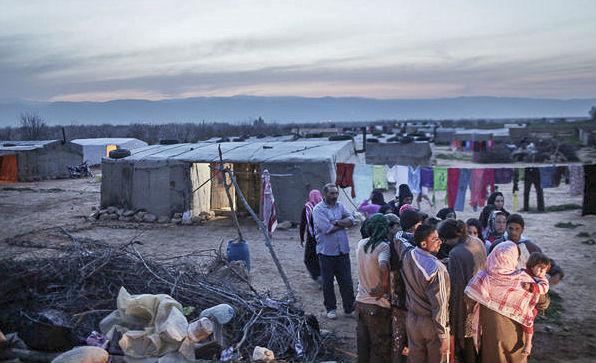

The Syrian refugee crisis is a daunting one. An estimated 13.5 million people in Syria are in need of humanitarian assistance. The number of Syrian refugees now stands at around 4.6 million, and 6.6 million more are displaced within Syria, half of whom are children. Those children are at risk of illness, malnourishment, abuse or exploitation. Millions of them have had to stop going to school.
Why are Syrians fleeing their country? Since the Syrian civil war started, 320,000 people have been killed, including almost 12,000 children, and about 1.5 million people have been wounded or permanently disabled. The infrastructure within Syria is collapsed, including healthcare and education. Safe drinking water is getting harder to come by as the average availability has decreased by half. In other words, the situation in Syria is an utter living hell.
One company wants to do something to help. Lush Fresh Handmade Cosmetics joined with the International Rescue Committee (IRC), a nonprofit organization that responds to humanitarian crises around the world, to send a clear message that Syrian refugees fleeing a war-torn country are welcome in the U.S. “This is the largest humanitarian crisis of our time,” Lush proclaims on its website.
The campaign runs from Feb. 15 to Feb. 28, with the goal of raising $350,000 from the sale of the company’s Hand of Friendship soap. All proceeds from the soap throughout the duration of the campaign will go into the Friendship Fund created by Lush, and the funds will be distributed to groups in North America that help settle Syrian refugees.
Lush decided to start the campaign because “we are, and always have been, a campaigning company,” Carleen Pickard, ethical campaigns specialist for Lush Cosmetics, told TriplePundit. Lush has a long history of campaigns, including fighting animal testing, banning dog-sled races and tours in British Columbia, Canada, and banning plastic bags.
“The current situation in Syria, and the journey for those forced to leave their homes seeking safety from the violence, is heartbreaking,” Pickard said. Lush wanted to “ensure, in a way that we could, that refugees arriving in North America are welcomed with love and friendship.” In addition, the company wanted to use its over 230 shops in North America “to inform our customers and give them a meaningful and impactful way to take action to show their support.”
Lush is doing several things as part of the campaign to get the message across that Syrian refugees are welcome in the U.S. One of those things is decorating its store-front windows with welcome signs in Arabic. Another is engaging customers to extend a welcome by signing welcome postcards to refugees who have just arrived and using the hashtag #refugeeswelcome on social media. The response has been “overwhelmingly positive” so far, Pickard said.
Lush’s campaign couldn’t come at a better time. Back in September, President Barack Obama told his administration to take in 10,000 Syrian refugees. After his announcement, some lawmakers were less than thrilled. “Our enemy now is Islamic terrorism, and these people are coming from a country filled with Islamic terrorists,” said Rep. Peter T. King (R-N.Y.). “We don’t want another Boston Marathon bombing situation.”
Then, in November, terrorists with ties to the Islamic State attacked Paris, and the voices against welcoming Syrian refugees into the U.S. grew louder. Republican presidential candidate Texas Sen. Ted Cruz said: “Anyone with an ounce of common sense would say, 'No, we shouldn't be bringing in tens of thousands of Syrian refugees.'”
Sen. Rand Paul (R-Ky.), another Republican presidential candidate who has since dropped out of the race, even introduced legislation to stop the U.S. from issuing visas to refugees from countries with high terrorist activities. Clearly, some Americans have hung out a “not welcome” sign for Syrian refugees. But not all. Sen. Richard J. Durbin (D-Ill.) wrote a letter with 14 other Democrats asking President Obama to take in an additional 65,000 refugees. Durbin praised Obama’s pledge to take in 10,000 refugees as “a step in the right direction.”
Pickard contrasted the attitudes in Canada concerning Syrian refugees with those in the U.S. “In Canada there has been an outpouring of public support for the arriving refugees since Prime Minister Trudeau announced that Canada would increase the number of refugee arrivals to 25, 000 by the end of this month,” she told 3p. “In the United States the context is a little different. The political conversation is more diverse with opinions split. And President Obama has faced opposition to his pledge to welcome 10,000 Syrian refugees to the United States this year.”
But Lush thinks education about the situation in Syria will help Americans understand. As Pickard said, “We believe that once people see and understand the violence and fear Syrian refugees have experienced, they will take action to lighten the suffering of the Syrian people.”
Image credit: Flickr/Freedom House